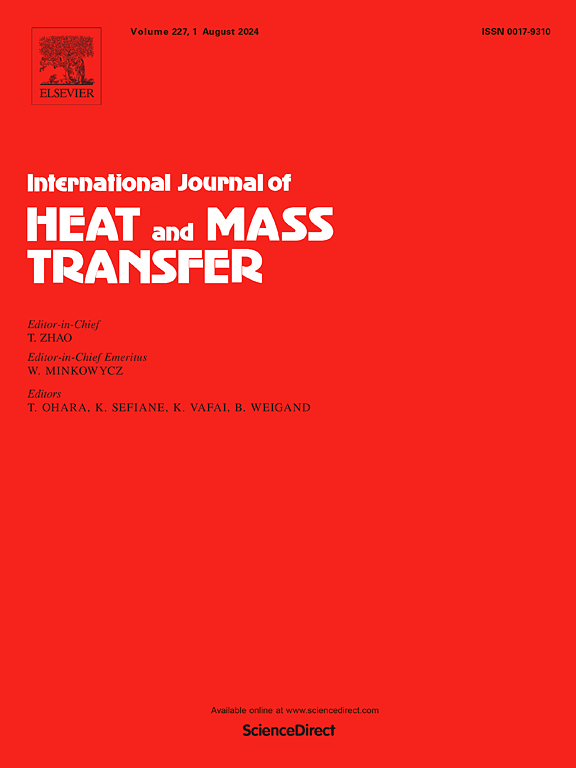Thermal performance evaluation of shaped sweeping jet film cooling at simulated engine condition using emissivity-corrected infrared thermometry
IF 5
2区 工程技术
Q1 ENGINEERING, MECHANICAL
International Journal of Heat and Mass Transfer
Pub Date : 2025-01-16
DOI:10.1016/j.ijheatmasstransfer.2025.126699
引用次数: 0
Abstract
Sweeping jet (SJ) is a periodic, self-excited flow generated by a fluidic oscillator, showing promising potential for film cooling applications. With continuous structural improvements, the shaped sweeping jet (SSJ) design has achieved a proper size and demonstrated excellent film cooling performance at low-speed conditions. However, its overall cooling effectiveness at engine-relevant conditions remains to be fully validated. This study investigates the thermal performance of the SSJ compared to the baseline 777 hole at simulated engine conditions. Experiments were conducted on a high-pressure guide vane with a row of SSJ on both the pressure and suction surface. Emissivity-corrected infrared (IR) thermometry was employed to measure the vane surface temperature across several blowing ratios (0.5 ≤ M ≤ 3.0), providing an evaluation of overall cooling effectiveness. This method incorporates three-dimensional reconstruction and emissivity correction to address temperature measurement errors caused by directional emissivity. The results indicate up to a 42 % improvement in overall cooling effectiveness for the SSJ compared to the baseline 777 hole, further validating the SSJ film cooling at simulated engine conditions and highlighting its potential for advanced turbine cooling applications.
求助全文
约1分钟内获得全文
求助全文
来源期刊
CiteScore
10.30
自引率
13.50%
发文量
1319
审稿时长
41 days
期刊介绍:
International Journal of Heat and Mass Transfer is the vehicle for the exchange of basic ideas in heat and mass transfer between research workers and engineers throughout the world. It focuses on both analytical and experimental research, with an emphasis on contributions which increase the basic understanding of transfer processes and their application to engineering problems.
Topics include:
-New methods of measuring and/or correlating transport-property data
-Energy engineering
-Environmental applications of heat and/or mass transfer

 求助内容:
求助内容: 应助结果提醒方式:
应助结果提醒方式:


